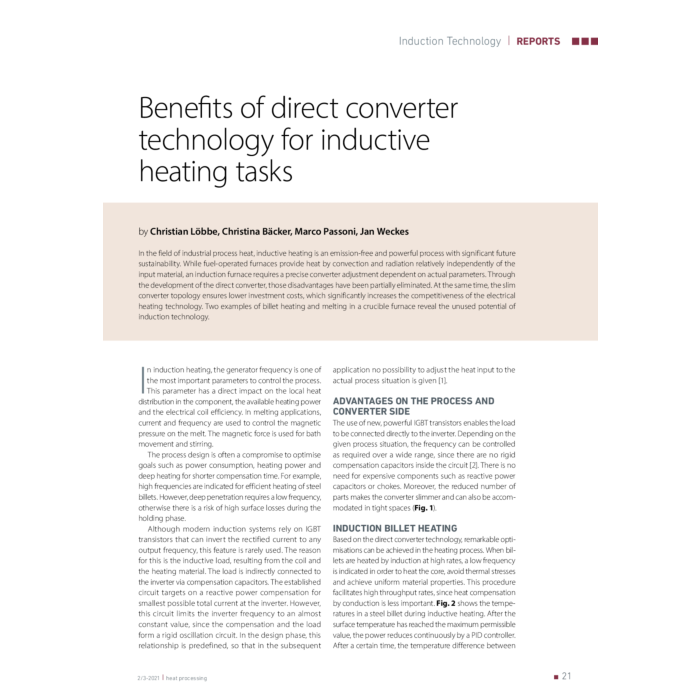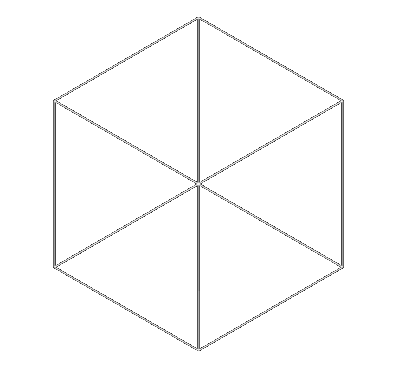Benefits of direct converter technology for inductive heating tasks
In the field of industrial process heat, inductive heating is an emission-free and powerful process with significant future sustainability. While fuel-operated furnaces provide heat by convection and radiation relatively independently of the input material, an induction furnace requires a precise converter adjustment dependent on actual parameters. Through the development of the direct converter, those disadvantages have been partially eliminated. At the same time, the slim converter topology ensures lower investment costs, which significantly increases the competitiveness of the electrical heating technology. Two examples of billet heating and melting in a crucible furnace reveal the unused potential of induction technology.
| Autoren | Christian Löbbe, Christina Bäcker, Marco Passoni, Jan Weckes |
|---|---|
| Erscheinungsdatum | 19.09.2021 |
| Format | |
| Verlag | Vulkan-Verlag GmbH |
| Sprache | English |
| Titel | Benefits of direct converter technology for inductive heating tasks |
| Beschreibung | In the field of industrial process heat, inductive heating is an emission-free and powerful process with significant future sustainability. While fuel-operated furnaces provide heat by convection and radiation relatively independently of the input material, an induction furnace requires a precise converter adjustment dependent on actual parameters. Through the development of the direct converter, those disadvantages have been partially eliminated. At the same time, the slim converter topology ensures lower investment costs, which significantly increases the competitiveness of the electrical heating technology. Two examples of billet heating and melting in a crucible furnace reveal the unused potential of induction technology. |


